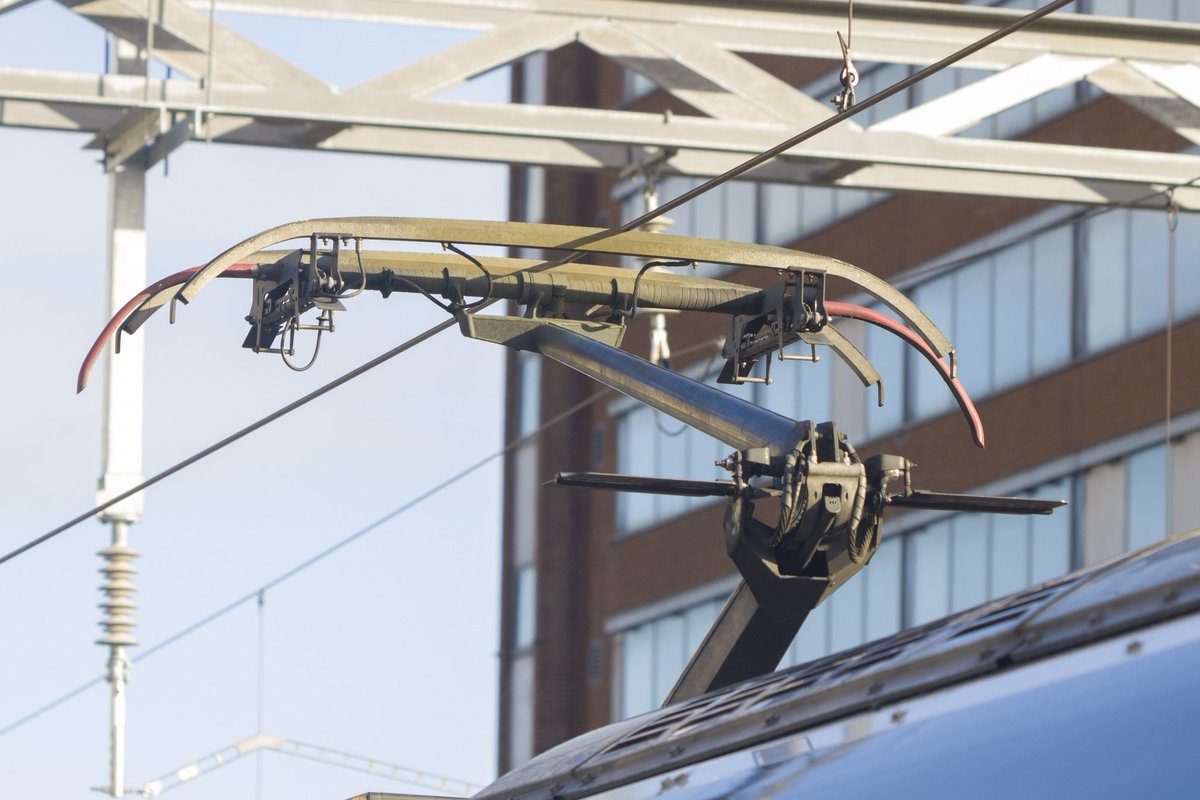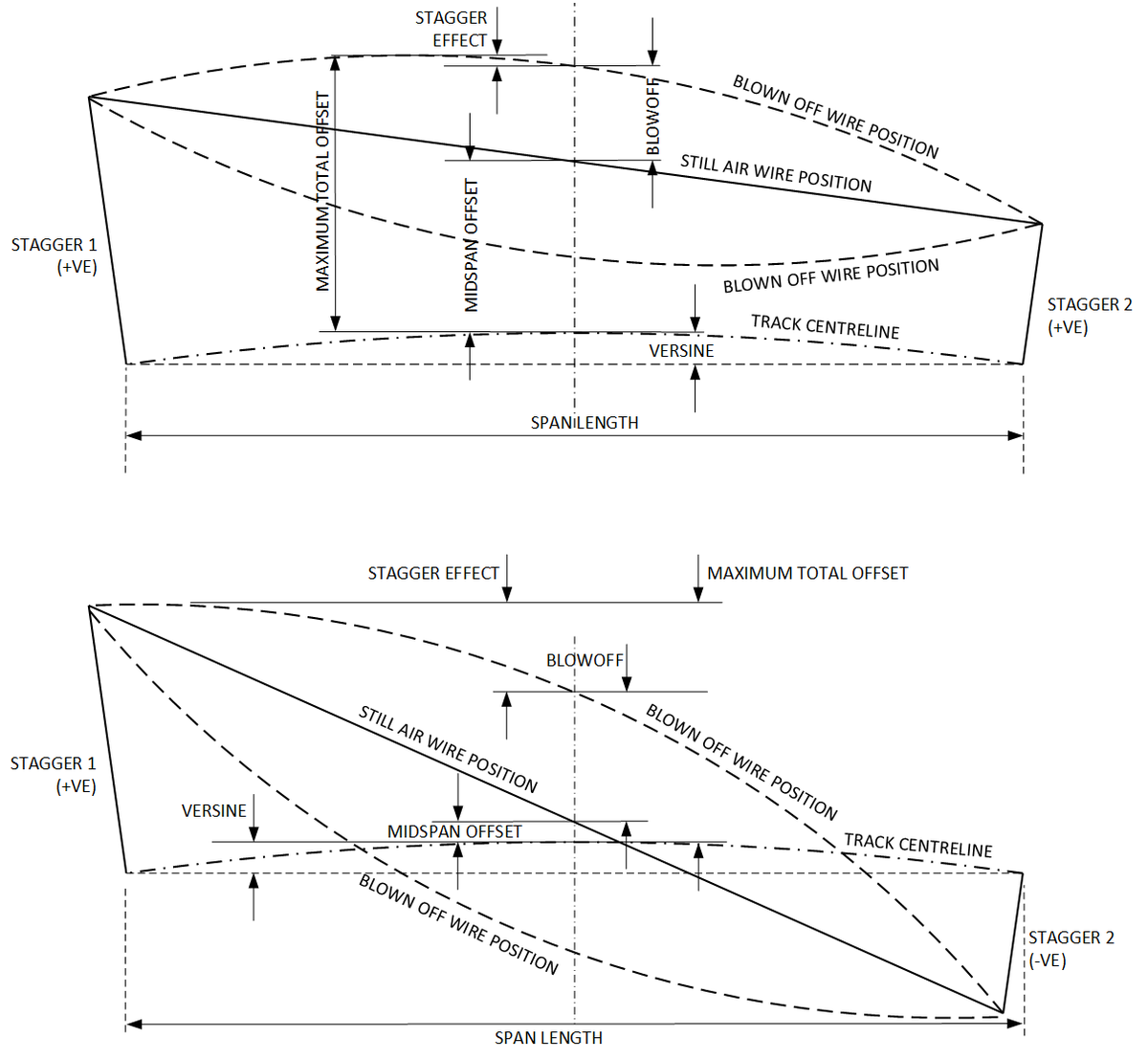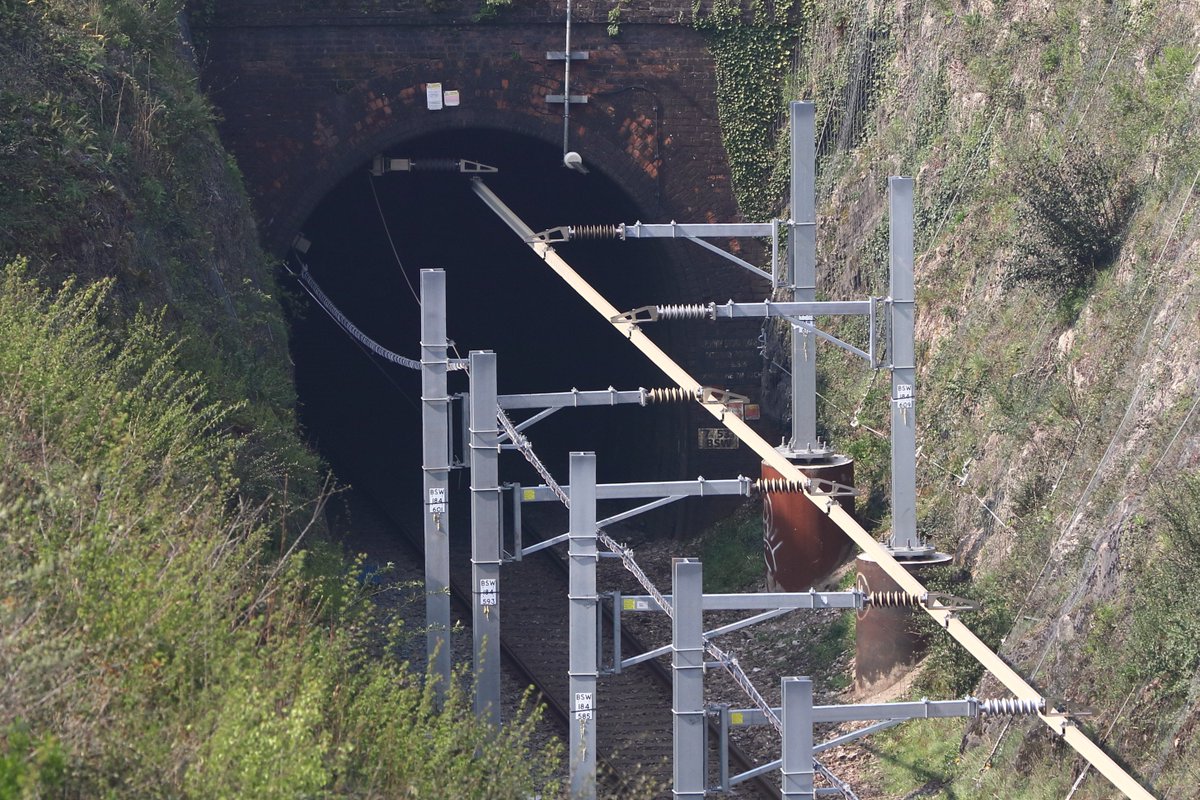
Rail electrification engineer. Opinions my own. FREE book https://t.co/kSWg1gneQj. Owner of @railwaysarchive. Spend most time at https://t.co/e9spH4ReKi
How to get URL link on X (Twitter) App




 All OLE systems have to deal with the phenomenon of along-track movement - the amount of expansion and contraction the wires experience as wire temperature varies, due to ambient heating/cooling from solar gain and wind, and also current heating due to electrical load
All OLE systems have to deal with the phenomenon of along-track movement - the amount of expansion and contraction the wires experience as wire temperature varies, due to ambient heating/cooling from solar gain and wind, and also current heating due to electrical load


 Lets start with the very basics: overhead line forms part of an electrical circuit. Just like all circuits, the electricity flows out from a supply (the feeder station) to the load (the train) and then flows back to the supply. The OLE forms the outward leg of the circuit
Lets start with the very basics: overhead line forms part of an electrical circuit. Just like all circuits, the electricity flows out from a supply (the feeder station) to the load (the train) and then flows back to the supply. The OLE forms the outward leg of the circuit
https://twitter.com/TonyP146/status/1195062897329737730?s=19This is an OLE test train that's been put together by the @networkrailwest electrification project team. The train is intended to undertake mechanical and electrical testing of the OLE between Bristol and Cardiff in advance of entry into service

 Let's start by defining coasting as follows:
Let's start by defining coasting as follows:




 You might be wondering why it has been done like this. Both tunnels are too low / arch too cramped to fit conventional OLE, So ROCS is used instead. Normally you would transition back to conventional OLE outside the portal. But here the distance between portals is too short.
You might be wondering why it has been done like this. Both tunnels are too low / arch too cramped to fit conventional OLE, So ROCS is used instead. Normally you would transition back to conventional OLE outside the portal. But here the distance between portals is too short.